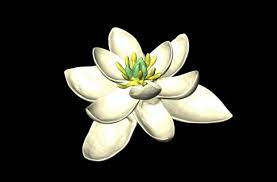A 140 million-year-old bloom bearing a striking resemblance to a water lily was the mother (and father) of every flowering plant living today, scientists believe.
No fossils of the flower have been found, but scientists inferred what it must have looked like after analysing a mass of botanical data.
The first angiosperm, or flowering plant, had a simple arrangement of layered petals and contained both male and female reproductive organs, according to the study.
Flowering plants evolved relatively recently during the age of the dinosaurs, brightening up a drab planet previously dominated by ferns, horsetails and mosses.
Their appearance had a dramatic effect on ecosystems and the climate and drove the rapid evolution of pollinating insects. Today, angiosperms represent 90% of all land plants and are vital to the survival of terrestrial life.
However, few fossils of the earliest flowers exist and their origins are still poorly understood.
For the new study, scientists led by Dr Herve Sauquet, from the University of Paris-Sud in France, combined models of flower evolution with information from a huge database of present-day floral traits.
A picture of their reconstructed primeval flower appears in the latest issue of the journal Nature Communications.
In outward appearance, the ancient flower looks similar to a water lily. Its key feature is multiple whorls of petal-like structures arranged in sets of three.
The researchers wrote: "In spite of similarities with some extant (present day) flowers, there is no living species that shares this exact combination of characters."
The whorled petal pattern challenged the belief of many experts that spiralled petals evolved first and later gave rise to whorled structures. It suggested that the reverse was true, and whorls came first.
The team concluded: "The origin of the angiosperm flower remains among the most difficult and most important unresolved topics in evolutionary biology.
"These results are a major step forward for understanding the origin of floral diversity and evolution in angiosperms as a whole."





